
Back
Alstonia spatulata Blume
| Family Name: | Apocynaceae |
| Synonyms: | Alstonia cochinchensis, Alstonia cuneata |
| Common Name: | Marsh Pulai, Hard Milkwood, Siamese Balsa, Pulai Basong, Basong, Pokok Rejang, Pulai Paya, Pulai Putih |
Alstonia spatulata or Marsh Pulai is a native tree of Singapore, measuring between 10 - 25 m tall. It has spoon to drop-shaped leaves, light yellow, cream to white fragrant flowers and petals with a wavy margin. Given its tolerance to waterlogging, Marsh Pulai is selected to grow along urban canals, pond edge plantings, areas in parks and gardens that are waterlogged.
Name
Classifications and Characteristics
| Plant Division | Angiosperms (Flowering Seed Plants) (Dicotyledon) |
|---|---|
| Plant Growth Form | Tree (Medium (16m-30m)) |
| Lifespan (in Singapore) | Perennial |
| Mode of Nutrition | Autotrophic |
| Maximum Height | 25 m |
Biogeography
| Native Distribution | Myanmar, Indochina, Thailand, Malaysia, Singapore, Indonesia, Borneo, to New Guinea |
|---|---|
| Native Habitat | Terrestrial (Riverine, Primary Rainforest, Secondary Rainforest, Freshwater Swamp Forest) |
| Preferred Climate Zone | Tropical |
| Local Conservation Status | Native to Singapore (Endangered (EN)) |
Description and Ethnobotany
| Growth Form | Alstonia spatulata is a small to large tree, 10- 25 m tall, forming symmetrical buttresses to 1.2m high |
|---|---|
| Trunk | The bark of the Marsh Pulai is a pale - dark grey to almost black, smooth, scaly or very slightly fissured, peeling off in square/ rectangular flakes, |
| Foliage | The leaves of Alstonia spatulata are arranged in whorls of 3-5, without distinct intrapetiolar stipule at the base of the leaf stalk; leaf stalks short, slightly winged, 4-15mm in length. Leaf blades papery to the touch (coriaceous), spatulate (spoon shape) to obovate (drop shape) that are 3-12 by 1.8-4.8 cm, apex of leaves rounded, sometimes retuse. Upper surface of leaves glossy green, under surface pale green. Leaves with 20-40 pairs of lateral veins that are closely spaced and almost perpendicular to the mid rib. Leaf stalks slightly winged. |
| Flowers | Inflorescence 3-11cm long, with 3-6 fragrant, white to light yellow to cream colored flowers arranged in a loose cluster. Calyx glabrous; Cororlla glabrous (without hairs) on the outside, corolla lobes with undulate (wavy) margins, spreading or almost reflexed in the open flower |
| Fruit | Its fruits are long, slender follicles, borne in pairs, 12-25 cm long by 2.5-3 mm wide, containing numerous seeds. |
| Habitat | It grows in swamp forests, mostly in secondary vegetation, on sandy soils up to 600 m altitude. |
| Similar | Similar to Alstonia pneumatophora in leaf shape, size and venation, but can be immediately told apart from A. pneumatophora as Alstonia spatulata does not have pneumatophore roots (knee like breathing roots). It also differs from A. pneumatophora in the number of pairs of secondary veins on the leaves (18-30 pairs in A. pneumatophora compared to 20-40 pairs in A. spatulata), having a glabrous calyx , and the glabrous fruits. |
| Associated Fauna | The fragrant flowers are insect pollinated. It is also the food plant for caterpillars of the moth Parotis marginata. |
| Cultivation | Alstonia spatulata can be propagated by seeds. |
| Ethnobotanical Uses | Medicinal: Traditional Medicinal Uses In Southeast Asia countries like Indonesia, the plant is used in traditional medicine to treat toothaches <1>, diabetics, sores and skin diseases <2>. It is important to note that some therapeutic effects from traditional medicinal uses of plants are not currently supported or verified by scientific research. As all Apocynaceae species, Alstonia angustiloba contain white, milky sap which can cause allergic reactions especially for those with sensitive skins. Medical advice should be sought before use. Timber & Products: The lightweight trunk wood of Alstonia spatulata is commonly used for household items, carvings, floats, and plywood. The plywood is used for coffins in Peninsular Malaysia, and for floats for nets in Thailand, and Sumatra. Pith helmets were manufactured from the wood of the roots. The lightweight root wood is also used as a cork substitute. Cut - Dried Flower: The fragrant flowers of the Marsh Pulai are used in garlands. |
Landscaping Features
| Landscaping | It is suitable for growing in urban canals, pond edge plantings, in waterlogged areas in parks and gardens as it withstands and stabilises waterlogged soils. |
|---|---|
| Desirable Plant Features | Ornamental Flowers, Fragrant |
| Landscape Uses | General, Parks & Gardens, Riverine, Pond / Lake / River, Marsh / Bog |
| Thematic Landscaping | Naturalistic Garden, Water Garden, Marsh Garden, Fragrant / Aromatherapy Garden |
Fauna, Pollination and Dispersal
| Pollination Method(s) | Biotic (Fauna) |
|---|---|
| Seed or Spore Dispersal | Abiotic |
Plant Care and Propagation
| Light Preference | Full Sun |
|---|---|
| Water Preference | Moderate Water, Lots of Water |
| Plant Growth Rate | Moderate |
| Rootzone Tolerance | Waterlogged Soils (Drains Site, Does not Drain Site) |
Foliar
| Foliage Retention | Evergreen |
|---|---|
| Mature Foliage Colour(s) | Green |
| Mature Foliage Texture(s) | Leathery |
| Foliar Type | Simple / Unifoliate |
| Foliar Arrangement Along Stem | Whorled |
| Foliar Attachment to Stem | Petiolate |
| Foliar Shape(s) | Non-Palm Foliage (Obovate) |
| Foliar Margin | Entire |
| Foliar Apex - Tip | Rounded |
| Foliar Base | Cuneate |
| Leaf Area Index (LAI) for Green Plot Ratio | 3.0 (Tree - Intermediate Canopy) |
Non - Foliar and Storage
| Trunk Type (Non Palm) | Woody |
|---|---|
| Stem Type & Modification | Woody |
| Root Type | Underground (Tap Root, Fibrous Root) |
Floral (Angiosperm)
| Flower & Plant Sexuality | Bisexual Flowers |
| Flower Colour(s) | White |
|---|---|
| Flower Grouping | Cluster / Inflorescence |
| Flower Symmetry | Radial |
Fruit, Seed and Spore
| Mature Fruit Colour(s) | Brown |
|---|---|
| Fruit Classification | Simple Fruit |
| Fruit Type | Dehiscent Dry Fruit , Follicle |
References
| References | <1> Diba, F., Yusro, F., Mariani, Y. & Ohtani, K. (2013). Inventory and biodiversity of medicinal plants from tropical forest based on traditional knowledge by ethnic Dayaknese communities in West Kalimantan Indoneisa. Kuroshio Science 7(1): 75-80. <2> Plant Resource Of Southeast Asia (continuously updated). Alstonia spatulata (PROSEA) - PlantUse. https://uses.plantnet-project.org/en/Alstonia_spatulata_(PROSEA). Accessed 19 October 2023. |
|---|
Image Repository
Others
| Master ID | 1413 |
|---|---|
| Species ID | 2706 |
| Flora Disclaimer | The information in this website has been compiled from reliable sources, such as reference works on medicinal plants. It is not a substitute for medical advice or treatment and NParks does not purport to provide any medical advice. Readers should always consult his/her physician before using or consuming a plant for medicinal purposes. |

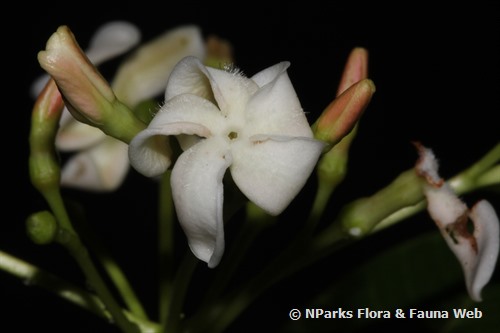

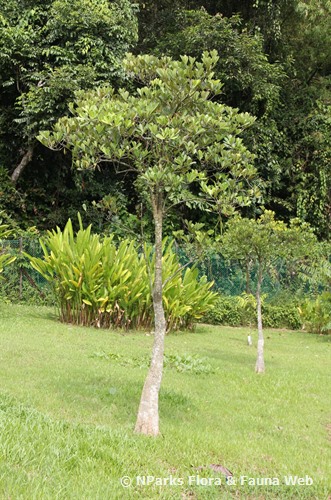


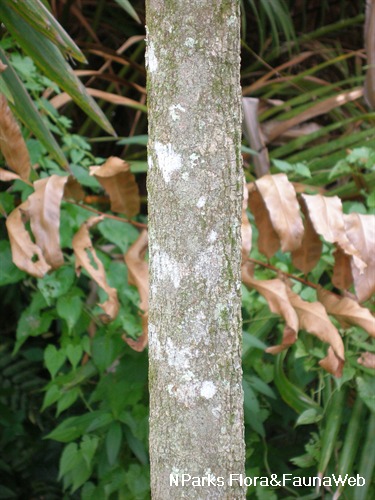

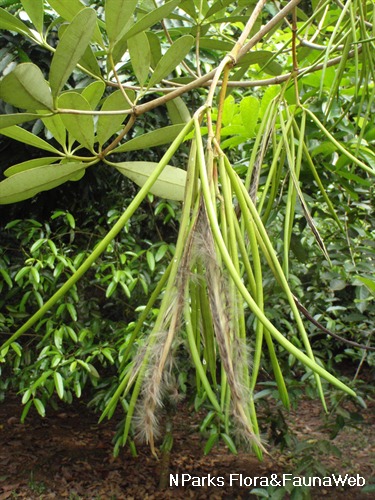

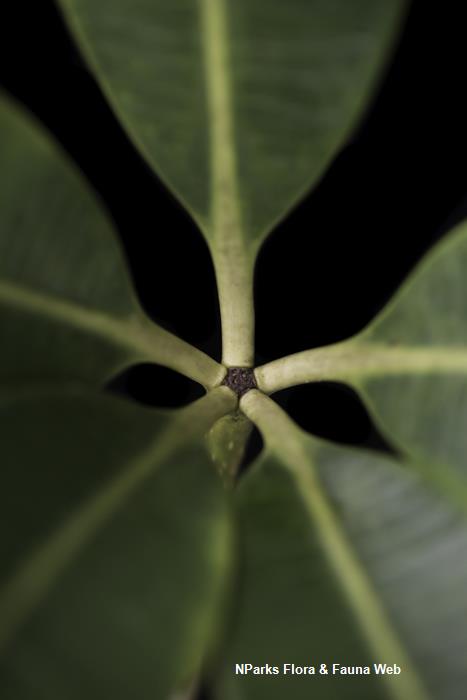
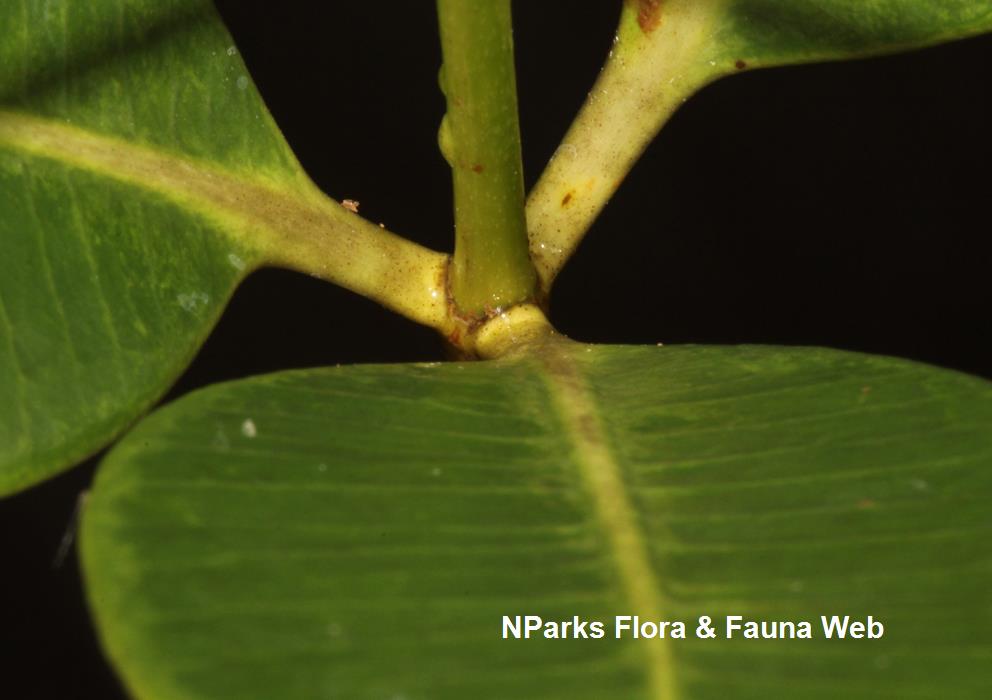
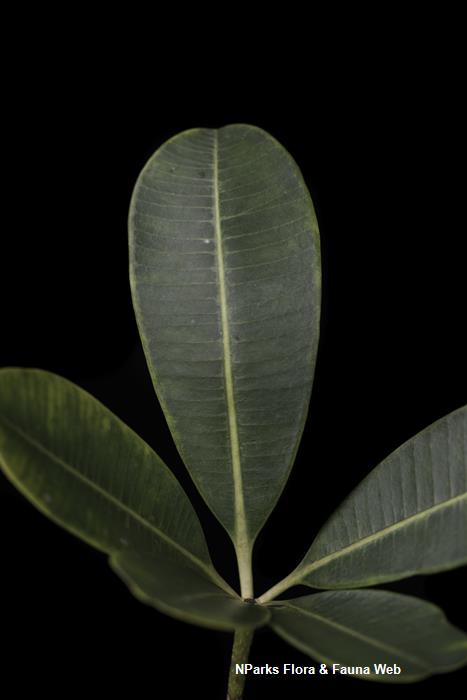
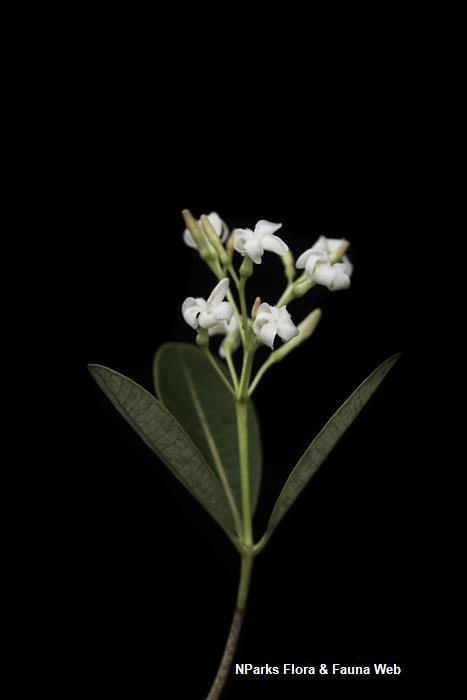

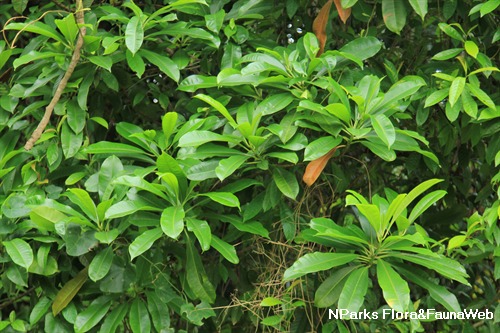
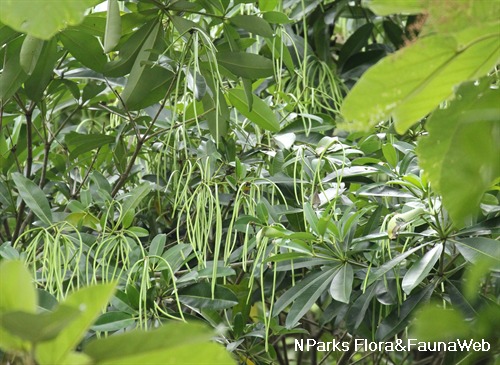
_lowres.jpg)
_lowres.jpg)